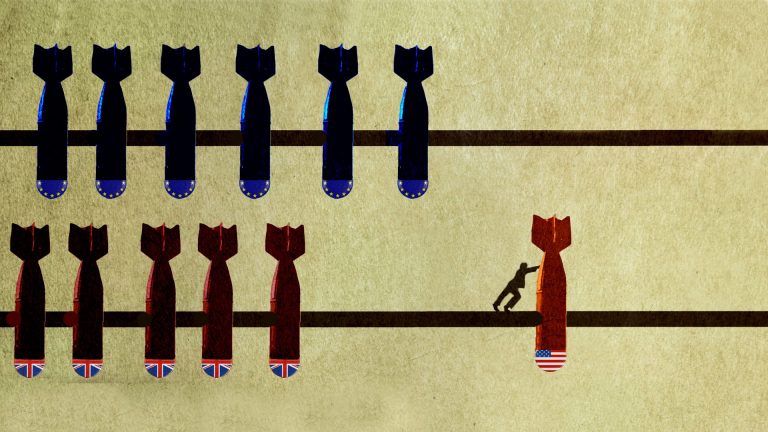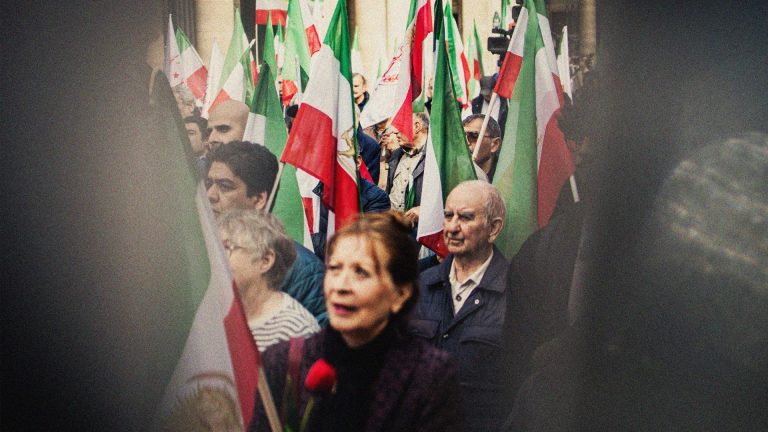Jean-Luc Godard’s À bout de souffle crackled and pulsed like nothing ever seen on screen before. IAN WALKER on a film which reinvented cinema and became not just one of the 20th century’s greatest films, but one of its greatest works of art
They were fanboys scuttling around Paris in the late 1940s and early 50s, film buffs careering from film club to film club, cinema to cinema trying to miss nothing. They would watch film after film, sometimes they would watch the same film repeatedly. Jean-Luc Godard, who was supposed to be at university in Paris, was one of the most fanatical and obsessive of them all – he stole to fund his film going and watched Orson Welles’s Macbeth four times in a sitting. His friend Jacques Rivette stayed on for a fifth screening.
The city at the time had a vibrant film culture which had grown out of the Cinemathéque, an institution started in the 1930s by Henri Langlois and Georges Franju as a repository for films and film-related objects. Langlois had been collecting the prints of old silent film since he was 17 and it was this instinctive curatorship that was the basis of the collection at the Cinemathéque. He had even managed, with the help of a sympathetic German officer – who presumably had a better taste in films than Hitler – to keep amassing films during the war.
Langlois was a brilliant curator. His life’s work was an argument for cinema as art and his instincts were almost uncanny. There were times when he knew the artistic value of a film, especially a Hollywood production, pretty much in isolation to what everyone else thought. And it was not that difficult to find strident dismissive opinions critiquing Hollywood films in post-war Paris. This was partly because of the influence of Marxist or Soviet thought on Parisian intellectual life and partly because of that wonderfully aloof and gloriously judgemental Parisian way.
In 1946, the city’s big talking point, when it came to film, was Citizen Kane. The Oscar-nominated masterpiece had been released in 1941 but did not arrive in France until the war was over. And Paris’s biggest talker in 1946 was Jean-Paul Sartre – he dominated the city’s post-war intellectual life, so of course he was going to pronounce his judgement on Citizen Kane. And he gave it a sound kicking. Influenced by the Marxist orthodoxies of the day he judged the film bourgeoise and dismissed all of Welles’s innovative direction, editing and cinematography as tricks which got in the way of social realism. Sartre was rarely this leaden in his judgement and rarely this wrong. Like many a good Marxist cultural critic before and since, Sartre had totally missed that the triumph of great art is the triumph of imagination. It has sod all to do with sociology. Great art does not need validation by or because of the masses or the working class.
But if Sartre was wrong about Citizen Kane the young fanboys weren’t. The young men tearing around the cinemas of post-war Paris absolutely understood that Hollywood was more than capable of producing films of substance and of producing art.
Along with Godard and Rivette these young men included François Truffaut and Maurice Schérer, who is better known to us as Èric Rohmer and who ran the Ciné-Club du Quartier Latin. Perhaps the key figure in this group was Andrè Bazin, who was slightly older than the others. He had screened films and hosted discussions throughout the Second War and the Nazi occupation at his Work and Culture ciné-club. It was Bazin who led the response to Sartre’s criticisms of Citizen Kane when he wrote a powerful defence of the film.
Rohmer also argued against Sartre’s opinion of the film but his response differed to Bazin’s. Bazin had argued that the point of cinema was the image, whereas for Rohmer it was the juxtaposition of images, the editing, and how that creates a film’s spatial universe that mattered.
These rows rattled around the clubs, cinemas and cafes of Paris with these earnest young men all working out what they thought about film and meaning, and about film as art. And then, in 1951, these debates found their way on to the written page with the launch of the magazine the Cahiers du cinéma. Launched by Bazin (and Jacques Doniol-Valcroze and Joseph-Marie Lo Duca) the magazine included amongst its writers Truffaut, Godard, Chabrol, Rohmer – who would become editor, and Rivette – who would also go on to edit the magazine in the 1960s.
In 1954 Truffaut wrote an article, La qualité française (The French Quality) which was an argument for what became known as the ‘auteur theory’. It was an argument for the artistry and imagination of the filmmaker. He wasn’t alone in developing this theory, all those aforementioned writers were using their time on Cahiers du cinéma to work out their view and their approach to cinema as art. This article and the ‘auteur theory’ was a call to arms, a call for these men to make films because these writers were not sideline merchants, they had no intention of hanging around in the margins, scuffling away as critics, passing judgement on the creativity of others. They would all make films and some of them would make films that changed cinema.
The films these directors made became part of what was known as the Nouvelle Vague – the New Wave – and the first of them to get a national and international reputation was Truffaut’s Les Quatre Cents Coups (The 400 Blows). This semi-autobiographical film about a troubled adolescent in Paris is a mixture of unsentimental social realism and cinematic innovation.
Truffaut himself was a troubled kid. Like Godard he also stole – though Truffaut’s stealing was a bit more pathological and compulsive – and his future looked very uncertain. But Truffaut was obsessed with cinema and that, and Bazin – who took him under his wing and encouraged him – saved him. Tragically, Bazin died just before the release of Les Quatre Cents Coups. The film is dedicated to him.
It is still electrifying to watch. It has a raw energy, partly because it is so unsentimental, and partly because Truffaut was so immersed in the language of film. Les Quatre Cents Coups quotes from other films and has a maturity – which is remarkable in a film made by such a young man – in how it uses the language and tools of cinema. But it also has an immediacy and an intimacy – it is a film that has all the energy and insistence of youth – that makes it so incredibly personal. This was Truffaut’s auteur theory applied to Truffaut.
However, for all its qualities (and it is a masterpiece), Les Quatre Cents Coups was not quite a revolutionary moment in cinema. It was original, but not explosive. It didn’t shatter tradition or find a new cinematic language. It was another film that did that.
Godard’s À bout de souffle (Breathless) was released a year later, in 1960. It is the story of Michel Poiccard, a gangster player by Jean-Paul Belmondo who, after killing a cop, escapes to Paris where he tracks down Patricia Franchini, played by Jean Seberg. He wants to flee to Rome with her but she is not sure and after she finds out what he has done she is torn between handing him over to the police and helping him escape.
The story in the film is nondescript and you can almost reduce it to Godard’s famous maxim that all you need for a film is a girl and a gun. But if the story is all a bit nothing, the film itself is thrilling. And what makes it crackle and pulse is the look of the film – the cigarettes and sunglasses and sex – which immediately marked it as so modern and exciting in 1960.
And Belmondo/Poiccard is so cool in this film. He is an existential hero – like a character out of a novel by Sartre or Camus. He is a self-created being, a man who lives by decisions and by action. There is a view of this film that it is bleak – that Poiccard’s struggle to live free is ultimately doomed and that his death is inevitable. Truffaut reckoned it to be Godard’s saddest film and described it as a film of ‘moral and physical unhappiness’. Another view is that Belmondo’s existential gangster is a bit cartoony and a bit overdone and that you can’t take him entirely seriously, and that this is a film of style over substance. And no one can argue as to how stylish this film is.
You can freeze shot after shot in À bout de souffle and you’ll have a brilliantly posed still. The camera occasionally lingers on Belmondo in his gangster hat, Gitane between his lips, surrounded by swirling cigarette smoke. Or on Seberg’s face, dwelling on her elfin features and cropped haired in shot after shot – if you have an issue with the male gazey-ness of cinema then Godard really will be top of your hit list. Add to these cool images of beautiful young people the wonderful jazz soundtrack and you have something that in its immediacy was chic, modern and very Parisian.
But the brilliance of À bout de souffle is not its style, nor is it a classic of existential drama. The brilliance of À bout de souffle lies in how it was put together. The film is a masterpiece of Modernist art – it deals in fragments, it shatters time, it confounds meaning but then finds new meaning. It finds new ways of saying things and it allows us to see the world differently. Godard’s approach to making this film was partially born out of necessity. The film feels improvised because much of it was. Godard had a rough idea of a story when he started filming but he was writing the dialogue as he went along. Shots and scenes were improvised throughout the film. And it was partially filmed using light, handheld cameras which tracked the actors as they walked through the streets of Paris.
Tracking shots were done with the cameraman Raoul Coutard sitting in a wheelchair being pushed by Godard. (The pair would work together on almost all Godard’s films from À bout de souffle to 1967’s Week-end – regarded by many as Godard’s greatest period). There were no extras, the crowd really was the Parisian crowd and throughout the film you have passersby stopping and staring at what’s going on. At one point a policeman supposedly ran over to help a character who had been shot, before he realised that it was a film shoot.
The improvised approach makes the film feel hurried, but in a way that gives it a breathless energy. Like action painting or bebop jazz what you are seeing in À bout de souffle is the process, the making or the becoming of something. And it’s all very self-conscious – especially when Joe Public stops and stares at the camera. This is a film that, in its very look, is aware of itself as film. And, as such, this is high modernism. It is one the 20th century’s great modernist works of art. Like Ulysses or The Waste Land, like Les Demoiselles d’Avignon or Kind of Blue it has that self conscious invention which jars and beguiles and opens up all sorts of new possibilities.
But this film was so much more than just being about improvisation. The film was originally long, over two-and-a-half hours, which was more than Godard’s backers wanted and also too much for a film built around breathless improvisation. So Godard had to cut it down. But where to edit?
His answer came from a suggestion by the filmmaker Jean-Pierre Melville (who appears in À bout de souffle). Melville’s suggestion was to cut all but the most exciting parts of the shot. This was editing not in service of the story, but in service of the energy of the film. It followed the beats of Belmondo’s movement, and Belmondo then was a man who moved liked a panther. It followed the energy of the Parisian streets. It followed the physicality of Seberg’s body and also her gaze. It delighted in the style and movement of cars (Godard is especially brilliant at filming cars). Cutting the film down according to these criteria added to the improvised immediacy of it all. It added to the film’s energy.
And then there is the nature of these edits. Godard was famous for his jump cut. This edit violently disrupts continuity. He didn’t invent it but his use of it really did change the language of film. The jump cut shatters temporality. For example, the dialogue may continue in a linear way which drives on the plot, but the image can jump from location to location – skipping forward through time. The juxtaposition between sound and image in this example confounds expectations, it shifts meanings and creates new spaces.
In the hands of Godard the jump cut became revolutionary. Now, however, you see these jump cuts everywhere and they have gone from being revolutionary to being a cliché. You find them in adverts and pop videos, and even YouTube vloggers spice up their self absorption with jump cuts as they tell you about their make-up or shopping.
These jump cuts, the editing in service of energy, the quirky and disorientating angles, the breaks in continuity, the verité style, the actors staring into the camera – they all broke the rules of cinema. But this wasn’t reckless iconoclastic rebellion. Godard was in thrall to cinema and his radical reworking of the rules were, in essence, a defence of cinema’s past. In the same way that the Sex Pistols were an argument for The Stooges or for The Who or for pre-army Elvis, Godard’s debut film was an argument for Eisenstein, for Dziga Vertov, for John Ford or for Anthony Mann. The very act of breaking with tradition was also an assertion that there is a tradition.
À bout de souffle is saturated with references to other films. Firstly there is the whole American B-movie gangster get-up of Belmondo, but there are also references to Bogart, Sam Fuller, Mann, Preminger, and assorted B-movies and westerns. The whole film is a love affair with Hollywood.
Yet it is not only replete with references to cinema. It also rattles through references to literature, art and music. The film mentions Dylan Thomas, Rilke, Faulkner, Sagan, Klee, Picasso, Mozart and Bach. And this wasn’t just Godard name-dropping.
For him the question of how sound and image constructs meaning is tied up with him trying to understand and express the differences between film and literature, film and art and film and music.
This question of where you position cinema as art, and what cinema can and cannot do, appears again and again in the films of Godard right throughout the 1960s.
His description of the New Wave was that ‘we barged into the cinema like caveman into the Versailles of Louis XV’. And this is exactly what À bout de souffle represents. It is a bold, aggressive, thrilling assertion of youth and ambition. Much like Elvis and the Beatles, Godard and the New Wave was part of that seismic generational shift that took place around the end of the 1950s and start of the 1960s. The past, the Second World War and the inherent failings that contained, belonged to other, older people. Throughout the Western world young people were trying to reinvent it all.
But Godard is being harsh on himself when he describes what he did as being caveman-like. The film is too intelligent to be dismissed like that. The Beatles of A Day In The Life may look back at Love Me Do and note its simplicity and lack of sophistication. But surely the point is that Love Me Do was unlike anything that went before. Its inventiveness was absolute – it may not be sophisticated but it seems to have come out of nowhere. And the same is true of Godard. His later films are much more sophisticated – downright difficult some might say – but none quite match the sheer inventiveness of À bout de souffle. It seems to have come out of nowhere and it changed everything. It is one of the great triumphs of 20th century imagination.
Ian Walker is a journalist and former museum curator living in Munich








